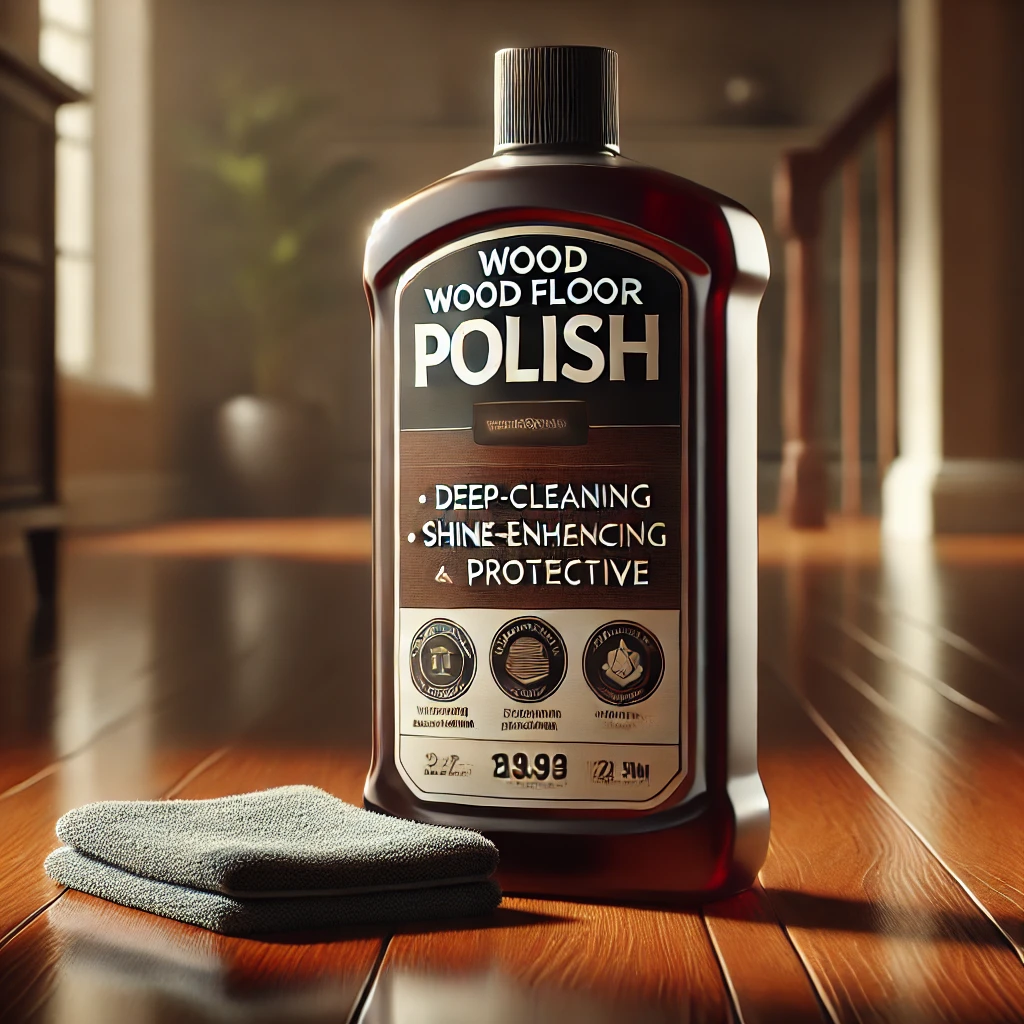Wood floor polish is an essential product for anyone looking to maintain the beauty and longevity of their hardwood floors. Over time, even the most durable wood floors can lose their shine and develop scratches, scuffs, and dullness. This is where wood floor polish comes in. Not only does it restore the natural luster of your floors, but it also provides a protective layer that helps prevent future damage. In this comprehensive guide, we’ll explore everything you need to know about wood floor polish, including how to use it, its benefits, and tips for maintaining your floors like a pro.
What is Wood Floor Polish?
Wood floor polish is a specially formulated product designed to enhance the appearance of hardwood floors. It works by filling in minor scratches and imperfections while adding a glossy or satin finish to the surface. Unlike wax, which can build up over time, modern wood floor polishes are designed to be easy to apply and maintain. They are available in various forms, including liquids, sprays, and creams, making it easy to find a product that suits your needs.
Using wood floor polish is an excellent way to refresh your floors without the need for sanding or refinishing. It’s a cost-effective solution for homeowners who want to keep their floors looking their best.
Benefits of Using Wood Floor Polish
- Restores Shine and Luster
Over time, foot traffic, furniture movement, and exposure to sunlight can cause wood floors to lose their shine. Wood floor polish helps bring back the natural beauty of your floors, making them look as good as new. - Protects Against Wear and Tear
Wood floor polish creates a protective barrier that helps shield your floors from scratches, scuffs, and stains. This is especially important in high-traffic areas like living rooms and hallways. - Extends the Life of Your Floors
Regular use of wood floor polish can help extend the life of your hardwood floors by preventing damage and reducing the need for costly repairs or refinishing. - Easy to Apply
Most wood floor polishes are designed to be user-friendly. With just a few simple steps, you can achieve professional-looking results without the need for special equipment. - Enhances the Overall Appearance of Your Home
Well-maintained wood floors can significantly enhance the aesthetic appeal of your home. Whether you’re hosting guests or simply enjoying your space, polished floors create a warm and inviting atmosphere.
How to Choose the Right Wood Floor Polish
Not all wood floor polishes are created equal. To get the best results, it’s important to choose a product that’s compatible with your specific type of flooring. Here are some factors to consider:
- Type of Finish
Different wood floors have different finishes, such as polyurethane, oil-based, or wax. Make sure the polish you choose is compatible with your floor’s finish to avoid damage or discoloration. - Desired Sheen
Wood floor polishes come in a variety of sheens, from high-gloss to satin. Consider the look you want to achieve and choose a product that matches your preferences. - Ease of Application
If you’re new to using wood floor polish, opt for a product that’s easy to apply, such as a spray or liquid formula. These are less likely to leave streaks or uneven patches. - Eco-Friendly Options
If you’re environmentally conscious, look for wood floor polishes that are made from natural, non-toxic ingredients. These products are safer for your family and the planet.
Step-by-Step Guide to Applying Wood Floor Polish
Applying wood floor polish is a straightforward process, but it’s important to follow the correct steps to ensure the best results. Here’s how to do it:
- Prepare the Floor
Start by thoroughly cleaning your floors to remove dirt, dust, and debris. Use a microfiber mop or vacuum to ensure the surface is spotless. - Choose the Right Product
Select a wood floor polish that’s suitable for your type of flooring. Read the manufacturer’s instructions carefully before starting. - Apply the Polish
Pour a small amount of polish onto the floor or apply it directly to a microfiber mop. Work in small sections, spreading the polish evenly in the direction of the wood grain. - Allow to Dry
Let the polish dry completely before walking on the floor or replacing furniture. This usually takes about 30 minutes to an hour, depending on the product. - Buff for Extra Shine
For an extra glossy finish, use a clean, dry microfiber cloth to buff the floor after the polish has dried.
Tips for Maintaining Polished Wood Floors
Once you’ve polished your wood floors, it’s important to maintain them properly to keep them looking their best. Here are some tips:
- Clean Regularly
Dust and dirt can scratch the surface of your floors, so it’s important to clean them regularly. Use a microfiber mop or vacuum with a soft brush attachment. - Use Furniture Pads
Place felt pads under the legs of your furniture to prevent scratches and scuffs when moving chairs or tables. - Avoid Excess Water
Water can damage wood floors, so avoid using excessive amounts when cleaning. Instead, use a damp mop or a cleaner specifically designed for wood floors. - Reapply Polish as Needed
The frequency of polishing depends on the amount of foot traffic your floors receive. For most homes, polishing every 3-6 months is sufficient. - Protect from Sunlight
Prolonged exposure to sunlight can cause wood floors to fade. Use curtains or blinds to protect your floors from UV rays.
Common Mistakes to Avoid When Using Wood Floor Polish
While wood floor polish is a great way to maintain your floors, there are some common mistakes that can lead to less-than-ideal results. Here’s what to avoid:
- Using the Wrong Product
Always choose a polish that’s compatible with your floor’s finish. Using the wrong product can cause damage or leave a sticky residue. - Applying Too Much Polish
Using too much polish can lead to streaks and an uneven finish. Follow the manufacturer’s instructions for the best results. - Skipping the Cleaning Step
Applying polish to a dirty floor will trap dirt and debris, making your floors look worse. Always clean your floors thoroughly before polishing. - Not Allowing Enough Drying Time
Walking on the floor or replacing furniture before the polish has dried can ruin the finish. Be patient and allow the polish to dry completely.

Eco-Friendly Alternatives to Traditional Wood Floor Polish
If you’re looking for a more natural way to care for your wood floors, there are several eco-friendly alternatives to traditional wood floor polish. These include:
- Vinegar and Olive Oil
A mixture of vinegar and olive oil can be used to clean and polish wood floors. Simply mix equal parts of both ingredients and apply with a soft cloth. - Beeswax
Beeswax is a natural alternative to synthetic polishes. It provides a protective layer and enhances the natural beauty of your floors. - Coconut Oil
Coconut oil can be used to moisturize and polish wood floors. Apply a small amount with a soft cloth and buff to a shine.
Conclusion
Wood floor polish is a simple yet effective way to keep your hardwood floors looking their best. Whether you’re dealing with minor scratches, dullness, or just want to add a layer of protection, polishing your floors can make a world of difference. By choosing the right product, following the correct application process, and maintaining your floors regularly, you can enjoy beautiful, polished wood floors for years to come.
So, if you’ve been neglecting your wood floors, now is the perfect time to give them the care they deserve. With the help of wood floor polish, you can revive your floors and create a warm, inviting space that you’ll love coming home to.
